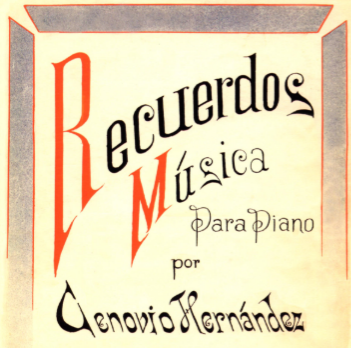Hidden Histories Focus on Less-known Aspects of San Antonio’s Past
By JASMINA WELLINGHOFF, Editor —
As time and history march forward, a lot of events, efforts, and changes end up forgotten, relegated to dusty files in seldom used archives or in sketchy notes and documents that are sometimes discovered decades later by a new generation.
One organization in San Antonio that’s been trying to preserve those “hidden histories” on the local level is URBAN-15, a group of artists who banded together 40 years ago “to experiment with exploratory sound and movement-based performance” in non-traditional settings. And to this day, the musicians and dancers of URBAB-15 continue to present unique arts events, such as the popular Carnaval de San Anto, the Josiah Media Festival, the amazing Holiday Laser Show and Mega Corazon, a poetry reading/performance event that takes place during Poetry Month, in April.

But in 2018, they also started “Hidden Histories,” an online video series that “pursues and preserves the untold stories of San Antonio.”
“So much of my personal artwork over the years dealt with what I call ‘community memory,’” said composer/visual artist/co-founder, George Cisneros. “During the tricentennial year we saw that the city was looking for projects that examine history. We came up with the idea of doing a little streaming show about things that people do not see on commercial programming, things a little more hidden. We started with topics that people could later explore more on their own.”
The inaugural 2018 episode was focused on a Mexican-born composer, Cenobio Hernandez, who moved to San Antonio in 1910 and lived for the rest of his life on the West Side. He worked as an accompanist for silent movies, said Cisneros, and played with the orchestra known as the Symphony of San Antonio. His grandson, Ricky Hernandez, himself a musician, found a pile of Cenobio’s compositions that were saved by the composer’s daughter, which led him to produce the album, Recuerdos: Musica para Piano por Cenobio Hernandez, released in 2002. Ricky performed and talked about his grandfather in the video.

Other early programs – referred to as episodes – were focused on defunct music venues in the city; the HemisFair ’68 international fair; the Fiesta Noche del Rio showcase of music and dance held at the Arneson River Theater; the Mutual UFO network, a Seguin-based international organization for UFO research; the demolition of older houses to make room for various development, and other topics.

The 2019 season featured a different range of subject matter including “Archival Thinking,” which dealt with preserving the documents of ordinary life such as letters, receipts and diaries, as well as an episode that examined the influence of Vatican II on Catholics worldwide, including here in San Antonio. The August episode was all about pan dulce and the November one looked at political advertising in a pre-digital age.
Now in its third season, Hidden Histories will soon produce its 29th episode in September focusing on labor, part of which will feature brief videos from San Antonians talking about their first job. And he July episode responded “to the national convulsion of grief and rage” following the death of George Floyd and featured former city councilman Mario Salas, who has seen his share of injustices in his lifetime, as well the young activist Ananda Sunshine Tomas who was involved in the organization of recent protests. Musician Ron Wilkins, a COVID-19 survivor book-ended the program with solo performances.

All episodes are currently available for free viewing on the Urban-15 website. Each new episode premieres on the first Monday of the Month and is subsequently repeated every Monday night during that month.
“We are not producing documentaries,” noted Cisneros. “We are more like online columnists who comment on issues.”
And they don’t do the original research. There are no resources for that. Instead, they identify people who are already knowledgeable in certain subjects or have had relevant personal experiences, and invite them to speak and share their insights.
Marisol Cortez, who has a Ph.D. in cultural studies from the University of California, Davis, has been part of the team since the beginning. She liked the idea of not working in the proverbial Ivory Tower. “For me, it made sense (to work on the project),” she said. “Instead of working in an academic environment, this was an opportunity to do community-based humanities work, exploring different under-explored aspects of San Antonio history. We were especially interested in the histories of marginalized people.”

The project is overseen by an advisory board and Cortez is the liaison person between staffers and the board, among other duties. “My role is to shape the conceptualization of each episode. Then both George and I approach the potential guests. And I put the script together for each show,” she explained.
“I really feel strongly that the knowledge we are gaining should be useful to the community we call home,” she added.
————————————————–
To view Hidden Histories episodes go to www.urban15.org/live-stream

Well done! Jasmina.